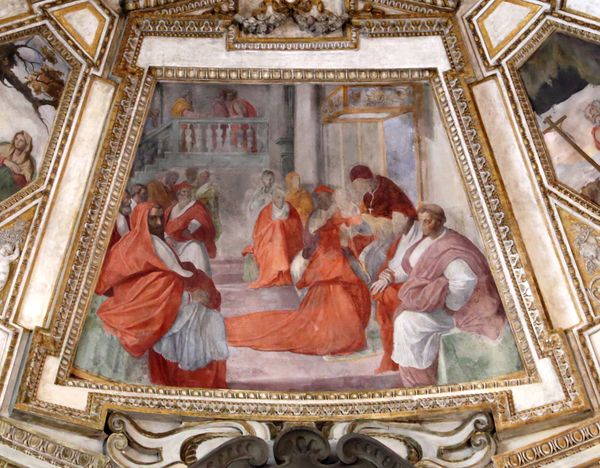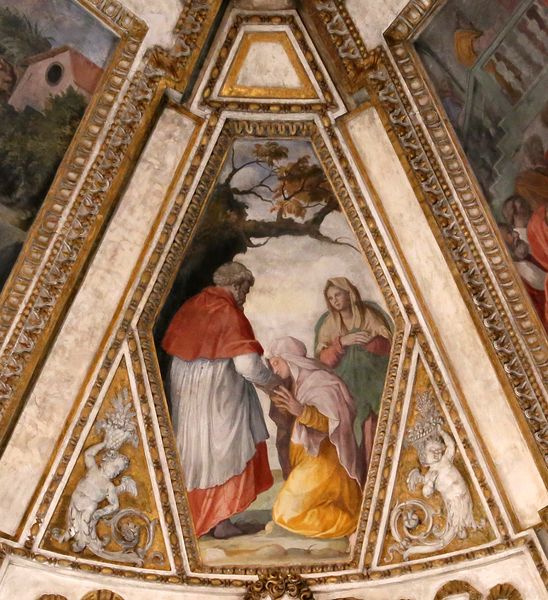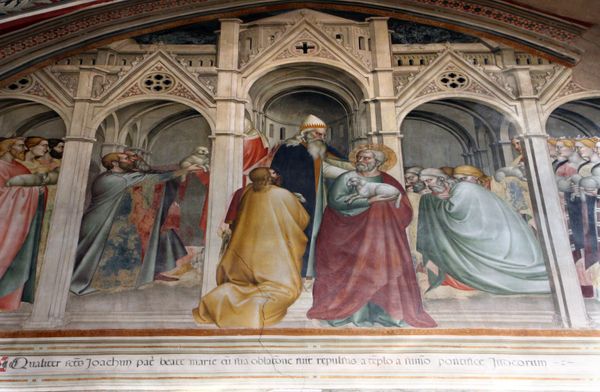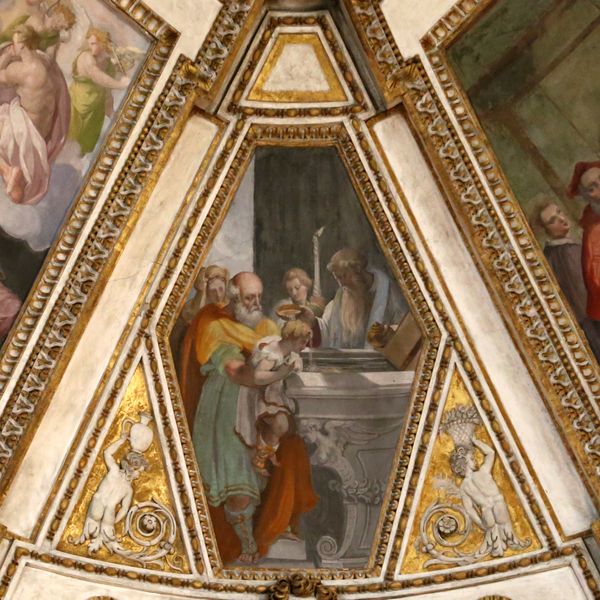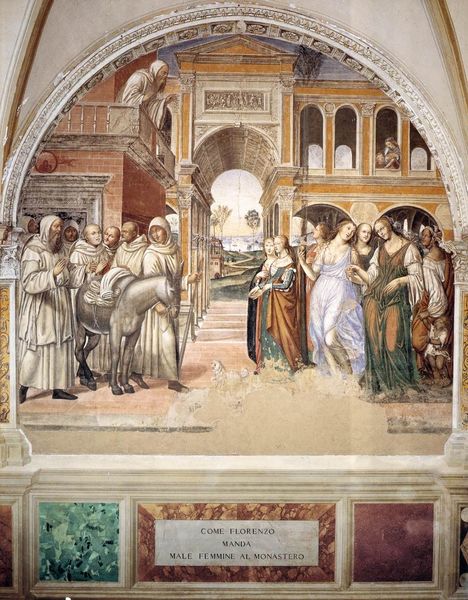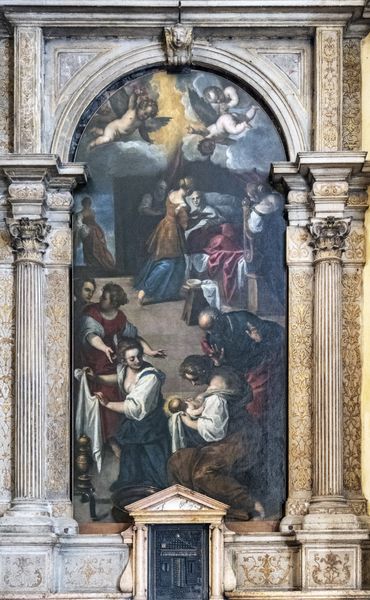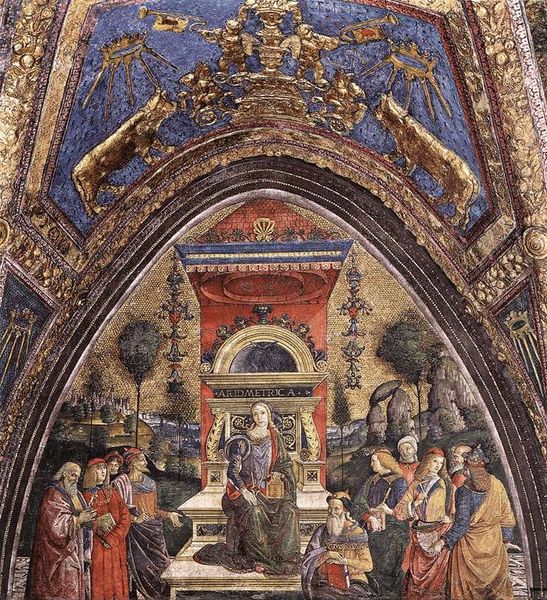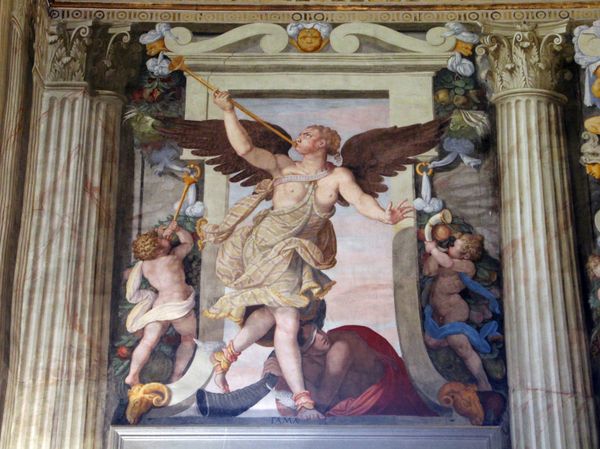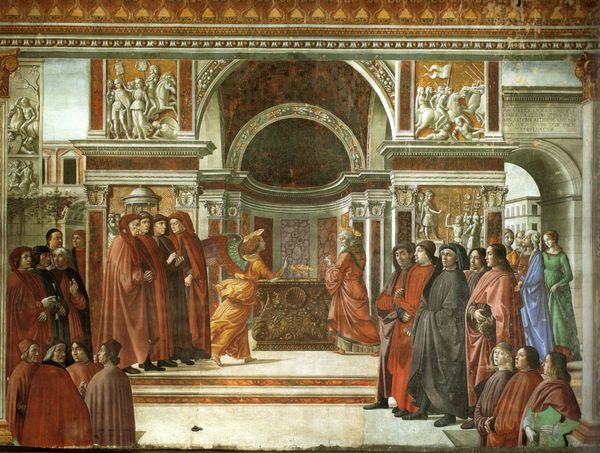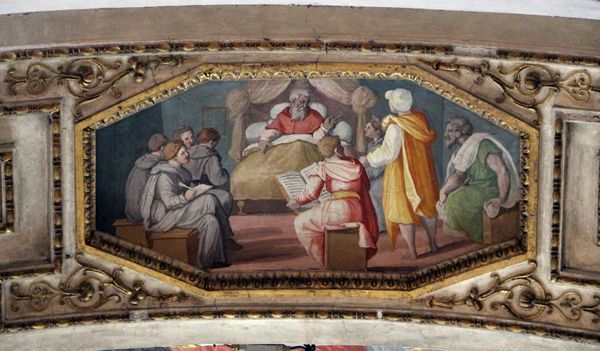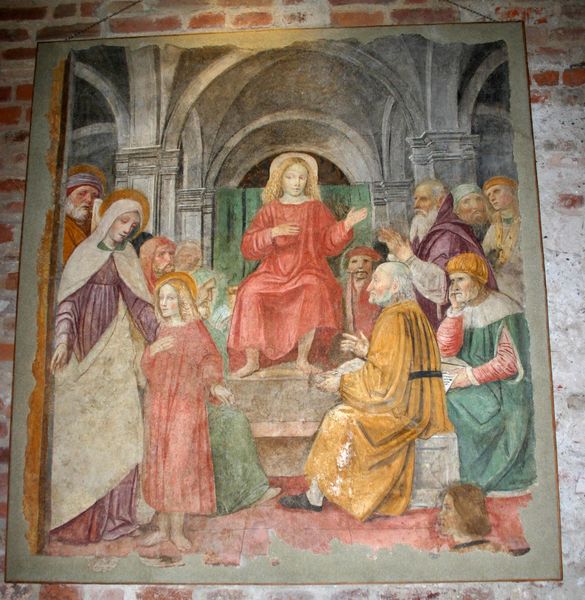
painting, fresco
#
narrative-art
#
painting
#
mannerism
#
historic architecture
#
fresco
#
traditional architecture
#
history-painting
#
academic-art
#
historical building
Copyright: Public domain
Editor: So this fresco is Alessandro Allori’s *Stories of St. Jerome*, painted in 1577, and it's located in Santa Maria Novella in Florence. I’m struck by how theatrical the scene feels, almost staged. How would you interpret Allori’s choices in this piece? Curator: A pertinent observation. The arrangement of figures does echo the Mannerist sensibility for artifice. Notice the meticulously rendered drapery; the folds cascading across the figures draw the eye into the composition, yet also serve to flatten the picture plane, denying the illusion of depth typical of the Renaissance. The limited color palette further contributes to a sense of heightened unreality. The focus on red, white, and muted earth tones creates a specific mood, wouldn’t you agree? Editor: Definitely. It's less vibrant than other frescoes I've seen. Is that flatness something that Allori emphasized deliberately, a kind of break from High Renaissance ideals? Curator: Precisely. Allori rejects the harmony and naturalism of the High Renaissance, opting for a more stylized and intellectual approach. Consider also the expressions of the figures; there is a deliberate lack of emotional intensity. What does this absence of feeling convey? Editor: Perhaps a focus on the intellect rather than the passion typically associated with religious narratives. Almost like an intellectual exercise rather than a moment of spiritual intensity. Curator: Yes, and consider that Allori may be making a conscious decision to favor the intricacies of surface design, over any deep narrative. By emphasizing formal elements like line, color, and composition, he calls attention to the artifice inherent in painting itself. How has this changed your initial impression? Editor: I now see how the composition works against a traditional, deeply emotional reading. The balance between realism and artifice is quite compelling, actually. It has a restrained intensity to it, like an exercise in controlled drama. Curator: Indeed, it's a study in controlled tensions and visual structure. These qualities elevate the artwork, not necessarily to the realm of the sacred, but rather the intellectual. A shift away from the purely devotional and towards the aesthetic appreciation of art.
Comments
No comments
Be the first to comment and join the conversation on the ultimate creative platform.
